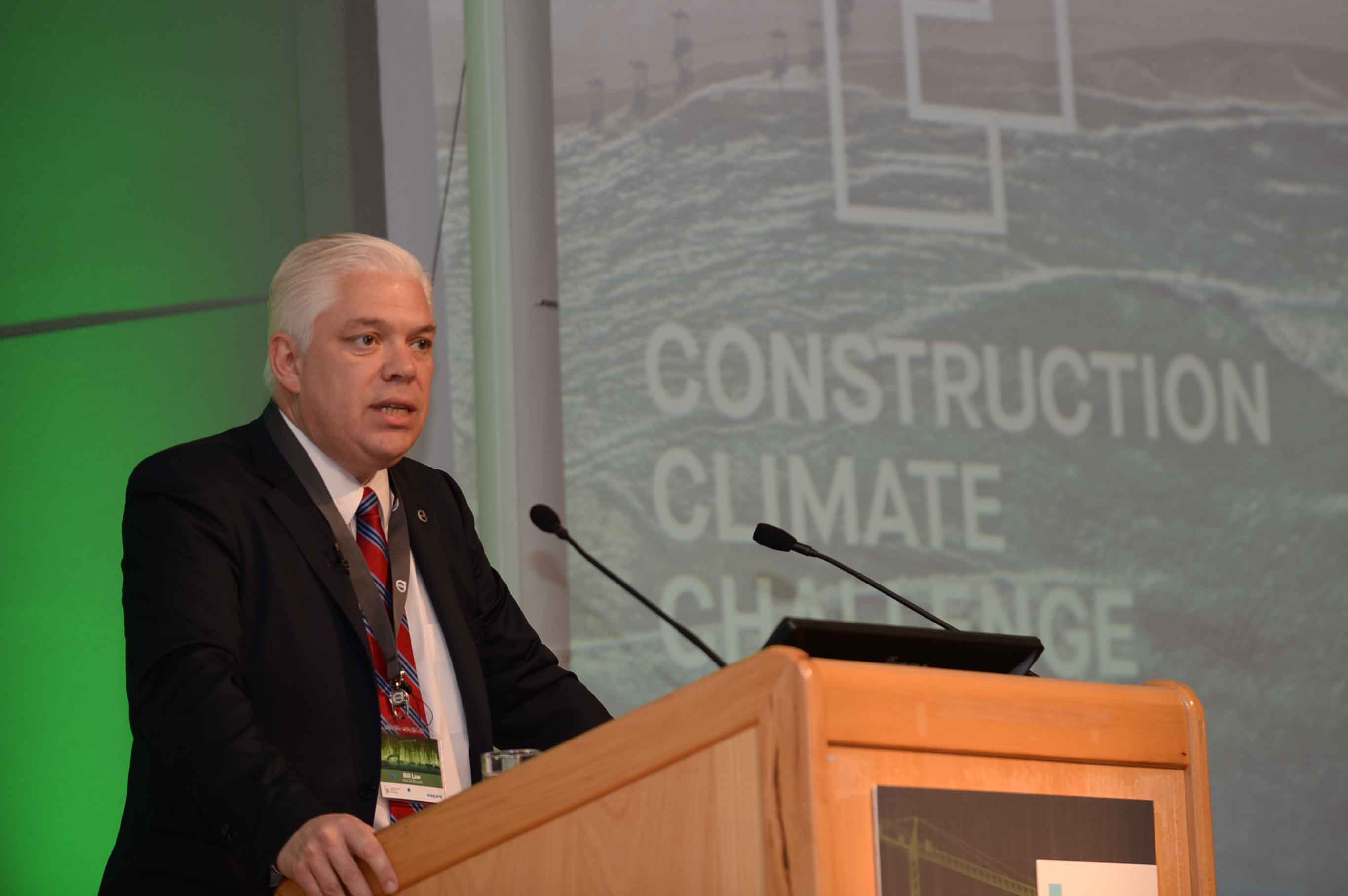
Reducing carbon emissions in infrastructure construction doesn’t necessarily mean higher costs, a recent Construction Climate Challenge (CCC) seminar, hosted by
During the CCC event in Birmingham, England, UK construction industry leaders discussed how reducing their carbon footprint was delivering substantial cost savings. The senior sector figures explored how the construction industry can reduce the carbon footprint of infrastructure projects and drive sustainability throughout the value chain, while also significantly reducing business expenditure.
Endorsed by the Green Construction Board (GCB), the CCC seminar on Thursday, 10 November 2016 was attended by 100 business leaders from major infrastructure projects, contractors and research bodies, including
Part of the solution
“Volvo CE has long been committed to reducing harmful emissions from its products and facilities, but climate change is too big of an issue to be dealt with through the resources of one company alone,” said Volvo CE senior vice president, Bill Law, who introduced the seminar. “As former Volvo Group president and CEO Pehr G. Gyllenhammar said back in 1972: “We are part of the problem – but we are also part of the solution.”
The event was chaired by Paul Toyne, an expert on environmental issues and sustainable development, and speaker after speaker reiterated the need for greater collaboration across the supply chain in order for carbon reduction targets to be met. Less expected perhaps, was the recurring theme of how reducing carbon in infrastructure can actually lead to lower, not higher, costs.
Reducing carbon reducing cost
“By focusing on low carbon, you get the benefit of low cost,” said Mike Putnam, president and CEO of Skanska, and GCB chairman.
“Temperatures are rising; the weather is becoming unpredictable and to tackle these issues requires leadership involvement and industry wide collaboration. It’s about collaboration with a capital C,” agreed Chris Newsome, chair of GCB Infrastructure Working Group and director of asset management at Anglian Water.
Underlying the need for industry-wide collaboration was Andy Spencer from
Bold targets
The Climate Change Act 2008, established an industry target of 35% carbon emission reduction by 2025 and 80% by 2050.
“Bold targets stop the industry from just nibbling at the edges, and entice them to look at things fundamentally differently,” said Andy Mitchell, chair of the Infrastructure Clients Group and CEO of Thames Tideway Tunnel.
To help the industry meet these targets, a new standard for carbon reduction was launched in May 2016, called PAS 2080.
“PAS 2080 provides a common language for the industry to effectively reduce carbon, said Maria Manidaki, from leading engineering consultant Mott MacDonald and technical author of PAS 2080. “PAS 2080 should be implemented from the beginning, because it’s at the earliest stages where the greatest chance to reduce carbon and cost exists.”
Embracing change
Volvo CE is working towards a sustainable future, as it endeavours to “build the world we want to live in,” said Jenny Elfsberg, director of emerging technologies at Volvo CE. “We have been developing engines that operate with alternative renewable fuels such as DME, HVO, Methane and even electricity. Our preferred choice is HVO, a high performing oil made from vegetable oils and fats, which is also a CO2 neutral solution.”
On top of this, Volvo CE has also set its own strategies to achieve lower carbon emissions, 10 x higher efficiency and Triple Zero, which looks to achieve zero down time, zero accidents and zero emissions. These strategies have paved the way to creating several automated machine prototypes and concepts, including the Electric Site Project that is targeting up to a 95% reduction in carbon emissions and up to a 25% reduction in total cost of ownership in quarry production operations.
Speakers from BRE, Guy Hammersley, group director for BIM, and Chris Broadbent, group director for Infrastructure, discussed some of the tools available to help achieve carbon reduction. “BIM, Building Information Modelling, is a process that starts with the owner in mind,” said Guy. “It operates through an asset life-cycle that drives better information management as a tool to create value, reduce waste and therefore, reduce carbon.”
Last year, BRE acquired CEEQUAL, and driven by the same ambition, plan to merge it with BREEAM (BRE Environmental Assessment Method) to deliver enhanced environmental and social benefits for civil engineering works, with better economic outcomes that benefit society. “To date, the schemes together have launched 644 projects, which encourage sustainability and add value,” added Chris Broadbent.
Publicly funded organisations such as High Speed 2 (HS2), also seek to create sustainable solutions in the supply chain, using tools such as BIM and BREEAM. “We encourage companies to collaborate with us, all they need is a plan of how they too can help to reduce carbon,” said Mark Fenton, climate change specialist at HS2.
Looking to the future
Fundamental themes that emanated from the seminar were the need to encourage collaboration, adopt change and convince the industry that this will assert cost saving potential. “It’s our responsibility to say what we want from the entire supply chain; change starts with us,” said Andy Mitchell. “And contrary to what people might think, lower carbon, means lower cost.
“Everyone has a role to play in achieving the targets that have been set for us, if we work together, we may just reach what we’re aiming for,” concluded Andy Mitchell.






